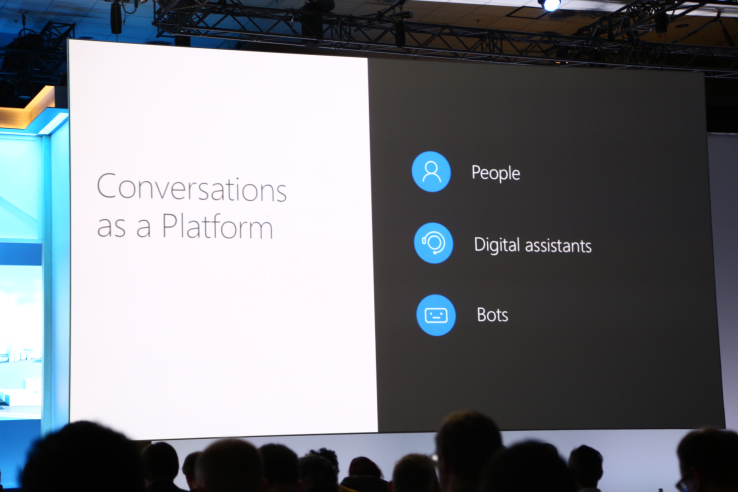

Microsoft’s Cortana personal assistant competes against the likes of Apple’s Siri, Amazon’s Alexa and the unnamed mystery voice behind Google Now. It’s part of a new wave of services slowly making talking to computers mainstream, but because of Microsoft’s weak position on mobile, it hasn’t quite had the same impact as some of its competitors.

Cortana is front-and-center at Build
At its Build developer conference today, Satya Nadella, Microsoft’s CEO, put Cortana front and center. The company is launching a number of new features that may just tempt you to use it more often, focusing on how the future of Microsoft will be Mobile First / Cloud First — and how one augments the other. Microsoft is calling it the conversation as a platform, living the at the intersection between all of its platforms and services.
“It is not going to be about man against machine”, said Satya, “It’s about man with machine.”

Cortana flexing her muscles: “Send Chuck the Powerpoint I worked on yesterday” picks the right file and offers to send it to the correct person. That’s impressive, and way cleverer than what’s available from other smart assistants.
Microsoft is stressing that Cortana isn’t about Microsoft, but about being the best possible digital assistant for everyone, across all platforms – Windows, iOS, Android, Xbox and beyond.
Maybe the most obviously useful feature here is that Microsoft is putting Cortana ahead of the login screen. Thanks to this, you will now be able to say “Hey Cortana” even when you are not logged into your PC. You won’t be getting any of the personalization features of Cortana without being logged in, of course, given that this would open up a whole slew of privacy issues.

She might be smart, but still hasn’t developed much of a sense of humor.
In addition, Microsoft is turning Cortana into a more proactive assistant. It will look at your activity and maybe offer you to send a presentation on your behalf or order lunch. Developers will be able to integrate Cortana’s new proactive intelligence into their apps, too, by linking these new actions to their apps.
From the demos at Build, it’s clear that Cortana has some serious firepower and clever tricks up her sleeve — certainly a lot more than Siri and her Google counterpart. As with everything else, however, adoption is king, and it remains to be seen whether Cortana being better than Siri is enough; the deep integration of the existing tools means there’s a seemingly unsurmountable barrier to getting people to switch away from the native assistants on Android and iOS.

